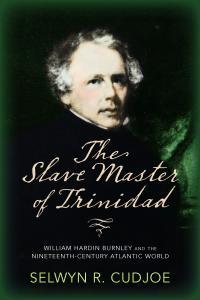The Lie...
By Dr Selwyn R. Cudjoe
May 11, 2020
PART 1 — PART 2 — PART 3
I was stunned but not surprised by Roodal Moonilal's letter to Joseph Mondello, US Ambassador to T&T, asking the US government to act against the best interest of our homeland. His lame excuse, a mea culpa perhaps, was: "If the United States imposes no sanctions against Trinidad and Tobago it will be because of the action of the United National Congress" (Express, May 5). As Mondello asserted, the US does not need Moonilal to tell it where its interests lies.
Moonilal's letter was not an aberration or a "one-man show." It was endorsed by his party. It was the continuation of an irrational Indian fear/hatred of blacks and a feeling of un-belonging that originated in the 1940s when T&T started its national journey.
This fear of blacks concretized itself after the Oilfields disturbances of 1937. Albert Gomes writes that after the disturbance: "White and near-white upper-class and middle-class all now saw the Negro as the enemy who not only threatened to engulf them with his blackness but also wanted to dislodge them from their secure positions" (Through a Maze of Colour).
In 1947 when India achieved its independence, another "sinister side of the racial spectrum" revealed itself. Gomes observed that "the pageantry of extraterritorial patriotism [among Indians] exceeded itself in Trinidad." More disturbing, India's Commissioner involved himself in the political affairs of the island by appointing himself "leader of our Indian community and its political counsellor and organizer…. Indian separatism was being sedulously fostered by India's diplomatic representative in our midst."
Gomes recalls: "I was at the time in the vanguard of the efforts to achieve a consensus of all of the British Caribbean territories on what has always seemed to me the sine qua non of West Indian nationhood, namely political federation. The divisive activities of Trinidad's Indian separatists cut straight across this ambition, since Indians were being persuaded that federation would mean their total outnumbering by the Negroes, who were predominant in the other territories."
Kamal Persad and Ashram B. Maharaj observed that the "Indian community viewed itself as a distinct and separate community, one nation living in a common space with other nations." It described PNM as the "Popular Negro Movement." (The Indian Struggle for Justice and Equality). In 1955 when Eric Williams arrived on the political scene, H. P. Singh, an executive member of the Democratic Labour Party (DLP) and foremost Indian nationalist, called him as "an Indian-hater" and the epitome of black racialism.
The separatist and anti-nationalist behavior among that segment of Indians revealed itself in March 1958 when, prior to the federal elections, a letter addressed to "My dear Indian brothers" and signed "Yours truly, Indian" circulated among thousands of Indians. It read in part: "If my dear brother you have realized these occurrences and the shaky position in which our Indian people are placed, woe unto our Indian nation in the next ten years."
On April 1, Williams declaimed against this insularity: "Just think of that, Ladies and Gentlemen. An election to bring into being a West Indian nation is fought on one side on the issue of 'our Indian nation.' The Indian nation is in India. It is a respectable, reputable nation, respected the world over. It is the India of socialism, the India of Afro-Asian unity, the India of the Bandung Conference…."
He continued: "It is the India which has just been told boldly by [Jawaharlal] Nehru,...one week before our Federal Elections: there is no other alternative to high taxes for implementing the development plans…. When the people fought for independence, they were prepared for many things which were unpleasant. Now when the country is engaged in building up its economy and raising the standard of life, people must be prepared to be hit."
After noting the progressive tendencies of the Indian government, he declared:
"That is the Indian nation talking, not the recalcitrant and hostile minority of the West Indian nation masquerading as 'the Indian nation' and prostituting the name of India for its selfish, reactionary political ends.
"This, then, is the danger facing the people of Trinidad and Tobago and the West Indian nation—the deliberate attempt of our opponents to exploit race as the basis of political power."
This radical fringe within the DLP that Williams castigated was not a figment of his imagination. Persad and Mahabir described 1956—62 as "a period of fear" for the Indian community. "Independence from Britain meant leaving one form of colonialist domination under the British raj to enter a period of a far more vicious and racist black neo-colonial domination under Eric Williams and the PNM….If certain conditions were not met by the black nationalists, …the continuance of British rule was a far more desirable option for the Indian community. The creation of an Indian state in Trinidad for the Indian nation was the extreme option available for Indians rather than existence under black rule and domination."
Moonilal was tapping into this sentiment when he appealed to the US to intervene in our affairs since the British raj looked impotent.
This distrust (or absence of a feeling of belonging) among certain segments within the Indian community has stymied attempts at national unity. The economists, financiers, and the manufacturers on the Road Map Committee can deal with the allocation of scarce, perhaps even scarcer resources, amongst the national community although these resources may not be distributed in an equitable manner. However, we can never deal adequately with "shared values" unless we face these lies at the heart of the nation. This is why coming to grips with this intractable problem is a necessary, perhaps primary, prerequisite in dealing with our post-COVID position.
I will continue this discussion next week.
Professor Cudjoe's email is scudjoe@wellesley.edu. He can be reached @ProfessorCudjoe.
Share your views here...

The Slave Master of Trinidad by Dr. Selwyn R. Cudjoe
|

